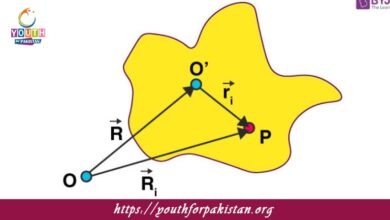Hess’s Law Of Constant Heat Summation MDCAT MCQs

Welcome to the Hess’s Law Of Constant Heat Summation MDCAT MCQs with Answers. In this post, we have shared Hess’s Law Of Constant Heat Summation Multiple Choice Questions and Answers for PMC MDCAT 2024. Each question in MDCAT Chemistry offers a chance to enhance your knowledge regarding Hess’s Law Of Constant Heat Summation MCQs in this MDCAT Online Test.
Hess’s Law is based on:
a) The first law of thermodynamics
b) The second law of thermodynamics
c) The third law of thermodynamics
d) The law of conservation of mass
Hess’s Law states that the total enthalpy change of a reaction is:
a) Dependent on the path taken
b) Independent of the path taken
c) Always negative
d) Always positive
Which of the following best illustrates Hess’s Law?
a) Formation of water from hydrogen and oxygen
b) Combustion of methane
c) Breaking of a chemical bond
d) Conversion of diamond to graphite
According to Hess’s Law, if a reaction can occur in multiple steps, the total enthalpy change is:
a) The sum of the enthalpy changes of individual steps
b) The difference in enthalpy between the reactants and products
c) Always zero
d) Always positive
Hess’s Law can be used to determine:
a) Activation energy
b) Gibbs free energy
c) Entropy change
d) Enthalpy change of a reaction
If a reaction is reversed, the sign of its enthalpy change:
a) Remains the same
b) Becomes negative
c) Becomes positive
d) Changes
When a chemical equation is multiplied by a factor, the enthalpy change is:
a) Multiplied by the same factor
b) Divided by the factor
c) Unchanged
d) Inversely proportional to the factor
The enthalpy change for the combustion of a substance can be calculated using Hess’s Law by:
a) Subtracting the enthalpy of formation of the products from that of the reactants
b) Adding the enthalpy of formation of the reactants
c) Subtracting the enthalpy of the reactants from that of the products
d) Using the bond dissociation energies
Hess’s Law is useful for calculating the enthalpy change of:
a) Exothermic reactions only
b) Endothermic reactions only
c) Reactions where direct measurement is difficult
d) Reactions at equilibrium
When Hess’s Law is applied, the enthalpy change for a reaction is calculated by:
a) Adding up the enthalpy changes of all possible paths
b) Considering only the fastest path
c) Ignoring intermediate steps
d) Adding the entropy changes of the steps
Hess’s Law can be used to calculate the enthalpy of:
a) Chemical reactions only
b) Physical changes only
c) Both chemical reactions and physical changes
d) Only reversible reactions
The standard enthalpy of formation of a compound can be determined using Hess’s Law by:
a) Combining the enthalpies of formation of reactants and products
b) Subtracting the enthalpy of formation of the products from that of the reactants
c) Adding up the enthalpy changes of the steps leading to the formation
d) Measuring the enthalpy directly
Which of the following statements is true according to Hess’s Law?
a) The enthalpy change for a reaction is dependent on the physical state of reactants and products
b) The enthalpy change for a reaction is path-independent
c) The enthalpy change for a reaction is always negative
d) The enthalpy change for a reaction is always positive
Hess’s Law can be applied to which of the following processes?
a) Heating of water
b) Melting of ice
c) Formation of ammonia
d) All of the above
Which of the following is not required for Hess’s Law to be valid?
a) Standard enthalpies of formation
b) The law of conservation of energy
c) The specific heat of substances
d) The states of reactants and products
The enthalpy change for a reaction is determined using Hess’s Law by:
a) Summing the enthalpy changes for the steps that lead to the product
b) Only considering the direct path to the product
c) Ignoring intermediate steps
d) Using standard enthalpies of formation
Hess’s Law is particularly useful for:
a) Determining the rate of a reaction
b) Calculating the enthalpy of complex reactions
c) Measuring temperature changes
d) Predicting product yields
The enthalpy change for the conversion of diamond to graphite is:
a) Negative
b) Positive
c) Zero
d) Impossible to determine using Hess’s Law
According to Hess’s Law, if a reaction can be expressed as the sum of two or more reactions, the enthalpy change of the overall reaction is:
a) The sum of the enthalpy changes of the constituent reactions
b) The difference between the enthalpy changes of the reactants and products
c) Equal to zero
d) Always positive
Hess’s Law is an application of:
a) The principle of conservation of mass
b) The principle of conservation of energy
c) The principle of conservation of momentum
d) The principle of entropy
The enthalpy change of a reaction is calculated using Hess’s Law by:
a) Adding up the heat capacities of all reactants
b) Adding up the enthalpy changes for each step in the reaction
c) Using the specific heat of the reactants
d) Subtracting the bond energies of the products from the reactants
Which of the following is an example of a reaction where Hess’s Law is applied?
a) Combustion of methane
b) Formation of water from hydrogen and oxygen
c) Conversion of diamond to graphite
d) All of the above
The enthalpy change for a reaction can be determined indirectly using:
a) Calorimetry
b) Hess’s Law
c) Boyle’s Law
d) Charles’s Law
The enthalpy change for a reaction can be calculated using Hess’s Law by:
a) Combining known enthalpy changes for related reactions
b) Measuring the heat absorbed or released
c) Using the ideal gas law
d) Analyzing the bond energies
Which of the following processes does not involve Hess’s Law?
a) Combustion
b) Sublimation
c) Freezing
d) Electrolysis
In Hess’s Law, the overall enthalpy change of a reaction is:
a) Dependent on the number of steps
b) Dependent on the path taken
c) Independent of the path taken
d) Always positive
Hess’s Law can be used to calculate the enthalpy change of a reaction by:
a) Combining reactions with known enthalpy changes
b) Measuring the temperature change directly
c) Using the ideal gas equation
d) Calculating the change in entropy
The enthalpy change for the formation of carbon dioxide from carbon and oxygen can be calculated using Hess’s Law by:
a) Using the heat of combustion of carbon
b) Using the heat of formation of carbon monoxide
c) Combining the enthalpy changes of related reactions
d) All of the above
According to Hess’s Law, if the products of a reaction have lower enthalpy than the reactants, the reaction is:
a) Endothermic
b) Exothermic
c) Reversible
d) Spontaneous
The enthalpy change for a reaction can be calculated indirectly using:
a) Hess’s Law
b) Le Chatelier’s Principle
c) Avogadro’s Law
d) Dalton’s Law
Hess’s Law can be applied to which of the following to calculate the enthalpy change?
a) A reaction that occurs in multiple steps
b) A reaction that is too slow to measure directly
c) A reaction that involves intermediate compounds
d) All of the above
The enthalpy change for a chemical reaction is independent of:
a) The physical state of reactants and products
b) The path of the reaction
c) The stoichiometry of the reaction
d) The temperature of the reaction
Hess’s Law is a direct consequence of:
a) The conservation of mass
b) The conservation of energy
c) The conservation of momentum
d) The conservation of entropy
The enthalpy change for a reaction can be determined using Hess’s Law if:
a) The reaction occurs in one step
b) The reaction occurs in multiple steps
c) The reaction occurs at constant volume
d) The reaction occurs at constant pressure
Hess’s Law is often used to calculate:
a) The rate of a chemical reaction
b) The enthalpy change of a reaction that is difficult to measure directly
c) The equilibrium constant of a reaction
d) The pressure of a gas
The enthalpy change of a reaction calculated using Hess’s Law is:
a) Always greater than the actual enthalpy change
b) Always less than the actual enthalpy change
c) Equal to the actual enthalpy change
d) Dependent on the temperature of the reaction
According to Hess’s Law, the enthalpy change for a reaction:
a) Can be determined by measuring the temperature change directly
b) Is independent of the number of steps in the reaction
c) Is always zero
d) Is only valid for exothermic reactions
If you are interested to enhance your knowledge regarding Physics, Chemistry, Computer, and Biology please click on the link of each category, you will be redirected to dedicated website for each category.





